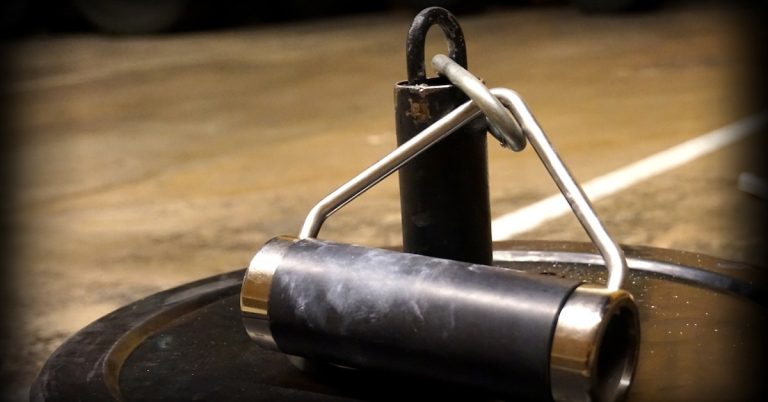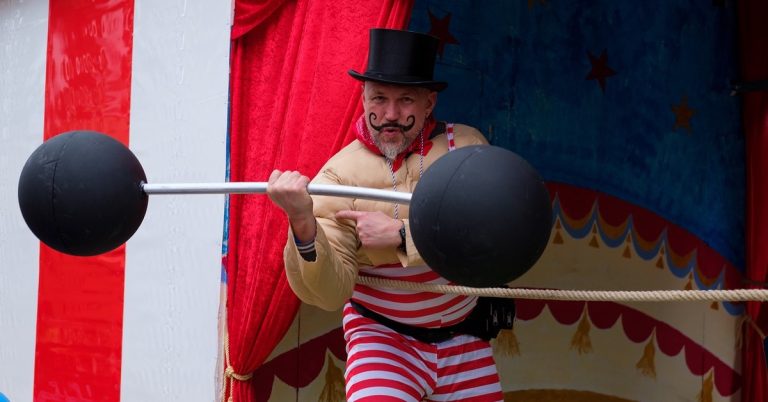In strength training, it’s best to coax or nudge adaptation, or so we’re told. The body can only adapt at a certain rate and trying to force adaptation can invite trouble.
Well, like many things in life, the greater the risk, the greater the reward! Most coaches will simply say, “Don’t force it,” but that statement is incomplete without “unless you want quick results!”
There’s a way to force the issue and get quick results while reducing the risk of overtraining and injury. Here’s how to do it.
Boost Recovery
Getting more usually means doing more, and doing more in strength training usually results in overtraining, leading to a lack of progress at best, or injury at worst.
But overtraining is not really the problem; the problem is under-recovery. You can provide any stimulus you want, you just need to make sure you can recover from it. If you go too quick before your next workout and you haven’t fully recovered, you won’t make adequate progress.
Results from the gym ultimately involve a combination of training and recovery. To force results, you need to force training, force feeding, and force sleeping. Let’s look at each aspect individually.
Force Training
You’ll need a greater volume of training for a greater volume of muscle, but trying to squeeze all that volume in one session is not the way to go. If you do marathon workouts, you’ll end up looking like a marathoner! It’s much better to do shorter workouts spread out throughout a day than one mega-long workout.
If you want quick results, you’ll need to train more often. And if you’re training more often doing multiple sessions a day, you’ll need to split your training for different body parts to give them ample time to recover. A triple split system works best in this case. Here’s an example:
DAY 1
Workout 1 – Chest and Back
A1. Incline Barbell Press: 5 x 6-8 @ 5010, 90s
A2. Mid-Grip Pull-Up: 5 x 6-8 @ 5010, 90s
Workout 2 – Chest and Back
A1. Flat Dumbbell Press: 4 x 10-12 @ 3010, 75s
A2. Seated Cable Row: 4 x 10-12 @ 3010, 75s
Workout 3 – Chest and Shoulders
A1. Standing Cable Crossover: 3 x 15-20 @ 1010, 60s
A2. Seated Dumbbell Lateral Raise: 3 x 15-20 @ 1010, 60s
DAY 2
Workout 1 – Thighs
A1. Front Squat: 5 x 6-8 @ 5010, 90s
A2. Lying Leg Curl: 5 x 6-8 @ 5010, 90s
Workout 2 – Thighs
A1. Hex-Bar Deadlift: 4 x 10-12 @ 3010, 75s
A2. Seated Leg Extension: 4 x 10-12 @ 3010, 75s
Workout 3 – Abdominals and Calves
A1. Supine Cable Knee-In: 3 x 15-20 @ 1010, 60s
A2. Seated Calf Raise: 3 x 15-20 @ 1010, 60s
DAY 3
Workout 1 – Upper Arms
A1. Incline Hammer Curl: 5 x 6-8 @ 5010, 90s
A2. Parallel-Bar Dip: 5 x 6-8 @ 5010, 90s
Workout 2 – Upper Arms
A1. Seated Zottman Curl: 4 x 10-12 @ 3010, 75s
A2. Kneeling Rope French Press: 4 x 10-12 @ 3010, 75s
Workout 3 – Forearms
A1. Seated Reverse-Grip EZ-Bar Wrist Curl: 3 x 15-20 @ 1010, 60s
A2. Seated Barbell Wrist Curl: 3 x 15-20 @ 1010, 60s
You’re probably looking at the program and thinking to yourself that it’s not a big deal. If you really wanted to, you could likely combine all three workouts together and get it done in an hour. To truly reap the benefits of this program though, you need to concentrate on the quality of training in addition to the quantity of work.
Each set must be taken to concentric failure, and the final set should go beyond that! Basically, take the last set to oblivion, until you can’t go anymore, using methods like forced reps, rest-pause training, slow negatives, static holds, drop sets, partials, and so on. Give it an all-out effort, and then get out of the gym.
As far as frequency is concerned, here’s what the average (natural) gym rat would do if they weren’t trying to force results:
Late Teens and Twenties: Day 1 – Day 2 – Off – Day 3 – Off
Thirties and Forties: Day 1 – Off – Day 2 – Off – Day 3 – Off
Fifties and Beyond: Day 1 – Off – Day 2 – Off – Day 3 – Off – Off
By using the suggestions outlined in this article, you should be able to shave a day of rest from the cycle so that it looks like this:
Late Teens and Twenties: Day 1 – Day 2 – Day 3 – Off
Thirties and Forties: Day 1 – Day 2 – Off – Day 3 – Off
Fifties and Beyond: Day 1 – Off – Day 2 – Off – Day 3 – Off
Keep in mind that this is not one of those overreaching protocols where you train daily without rest for two or three weeks in an attempt to deplete the body as much as possible, and then experience a rebound effect after resting for a short period of time (usually five to seven days). That strategy will make you weaker and smaller while you’re doing it, and it can only be done for a short period of time.
The protocol I’m suggesting will allow you to get more training units in, and push hard without digging a huge hole that you can’t get out of without taking time off from training. Rather than get weaker and smaller, you’ll get bigger and stronger quickly with this plan, and you’ll continue to grow for an extended period of time, but you can only force those type of results if you recover sufficiently.
That means you need to eat and sleep big to get big!
Force Feeding
Most guys don’t realize how much food they really need to eat to make “massive” gains. Quite frankly, most so-called “hardgainers” have a hard time gaining because they eat as much in a day as they should eat in a meal!
To pack on muscle quickly, you need to force down eight meals a day: four solid meals (breakfast, lunch, dinner, and a bedtime meal) and four liquid meals (one after each workout and one in the middle of the night). If you don’t do eight, you won’t gain the weight!
I won’t get into all the specifics of what you should eat at each meal. You can check out my book Mass Explosion for that, but I do want to discuss two meals that will make a “huge” difference in your progress: the pre- and intra-bedtime feedings.
Pre-Bedtime Meal 1
I’ve come up a bedtime concoction over the years inspired by nutrition expert Rheo Blair. My Blair-like protein pudding involves a mixture of full-fat ricotta (whey) and cottage (casein) cheese, colostrum, a raw pastured egg, and organic heavy whipping cream. Add organic berries, a touch of raw (unpasteurized and antibiotic-free) honey, and feel free to add some protein powder to the mix.
Sit down and eat that concoction slowly. To aid digestion, take some betaine HCL and broad-spectrum enzymes with this and every other meal, just like Blair recommended many moons ago.
Not only does this meal taste great, it sits quite well in the stomach, and I swear it builds muscle! It makes for a great snack before bed.
Pre-Bedtime Meal 2
Mix a scoop of gelatin (Vital Proteins Pasture-Raised Beef Gelatin is one of the best products on the market), whey, and yogurt in a small bowl and enjoy before bed. Choose a plain/unsweetened, full-fat, certified organic, Greek-style yogurt (three excellent brands are Nancy’s, Straus Family Creamery and Wallaby Organic), or try yogurt made from sheep or goat milk if you’re lactose intolerant. If you wish, you can add some organic berries and honey to the mix as well.
Intra-Bedtime Feeding
Don’t use an electronic alarm clock to wake you up in the middle of the night. Use your “bladder” clock instead. To do this, drink a large glass or two of water before you retire. For most people, that will do the trick.
You’ll wake up some time during your slumber to urinate, and your whey/casein shake will be right there waiting for you! It’s an easy, natural way of disrupting sleep briefly for a feeding. You should be able to fall right back asleep afterward, and it’s important that you do, because you’ll need all the sleep you can get to force growth on this program.
Force Sleeping
Constant interrupted, fragmented sleep at night will destroy you, but fragmented sleep during the day will restore you. Just ask any parent how much muscle they gain the first few months after having a newborn. Most guys and gals that I know shrink during that period. Well, their muscles shrink, not necessarily their bellies! Why? Because they’re constantly tired!
On the other side of the coin, when you’re able to get plenty of sleep – both day and night – you can grow like a weed assuming that you’re training and eating right. Fact is, muscle growth occurs while you sleep, not while you train. The message to grow occurs while you train, but the actual growth occurs while you sleep.
Strive for a minimum of eight hours of sleep at night, and try to get a couple naps during the day, one after each of the first two workouts. Right after each workout, have a shake that contains fast-acting whey protein and high-glycemic carbs, and then try to catch a 20-minute nap. Consider using a Chi Machine while napping. It’s a portable electrical device that features a padded ankle support that moves side to side. You just lay down on the floor, rest your ankles on the pads, use the remote to control the speed, and the machine will do the rest.
The Chi machine simulates the motion of a swimming fish, which creates a ripple effect throughout the body. This does all kinds of neat things to help your muscles recover, most notably increase circulation and promote lymphatic drainage, but it doesn’t end there. The machine simulates another action – one that is deep-rooted – that is, your mother rocking you as a baby! And it’s this effect that relaxes the hell out of you and puts you to sleep.
Put some relaxing music on if you wish, shut the lights off, and lay on the floor with your ankles resting on the machine. (Take note that the Chi machine has a tendency to hyperextend the knees. If you feel any discomfort behind your knees, rest your legs on a pillow or two and it should solve the problem.) Set the dial to a low speed and if all goes well, you should be asleep in no time. The machine automatically shuts off after 20 minutes, which is just the right dose. Try it.
After your third workout, have your post-workout shake, go home, but don’t nap. A nap too close to bedtime can mess up your sleep at night. Have dinner and right afterwards, put on a pair of orange/amber lens glasses, such as the Uvex or Solar Shield brands that are sold at Amazon. Wear those until it’s time to go to bed. Trust me, after you have your bedtime meal, it will be lights out! You should have no problem falling asleep, which can be an issue for people that are overtrained.
On your off days, use restoration methods such as contrast showers, salt baths, soft-tissue work, stretching, massage, or electronic muscle stimulation to enhance recovery. Feel free to use your Chi machine and orange glasses on those days as well.
Eat, Sleep, Train, and Grow!
Results won’t occur overnight, at least not after the first night, but they’ll come pretty quick if you force things properly. Make sure to monitor your body weight daily. Weigh yourself first thing in the morning. If your weight drops, up your carb intake that day, and make sure you do nothing but eat, sleep, and train.
Obviously, this is not the type of program you squeeze into a busy schedule, so plan accordingly. You’ll find that your weight might not budge for a while, then all of sudden, you’ll wake up a few pounds heavier. It tends to come in spurts.
Frequent short workouts, feedings, and bouts of sleep maximize anabolic events and minimize catabolic events. When anabolism exceeds catabolism, you have growth. The bottom line is this, if you want to force results from your training, make sure to force recovery as well.

The Periodization Blueprint for Chin-Ups and Pull-Ups
Exciting news! Just got my hands on Swissies45, and they’ve transformed my chin-up game. No more draping an EZ-Curl bar

Unleash Your Grip Strength: Elevate Your Performance with IronMind Implements
Are you ready to take your grip strength to the next level? Look no further than IronMind implements. These versatile

The 3/7 Method for Size and Strength
A new strength training protocol has surfaced that will help you maximize strength gains with less training time and effort.
follow
Error: No feed with the ID 2 found.
Please go to the Instagram Feed settings page to create a feed.
